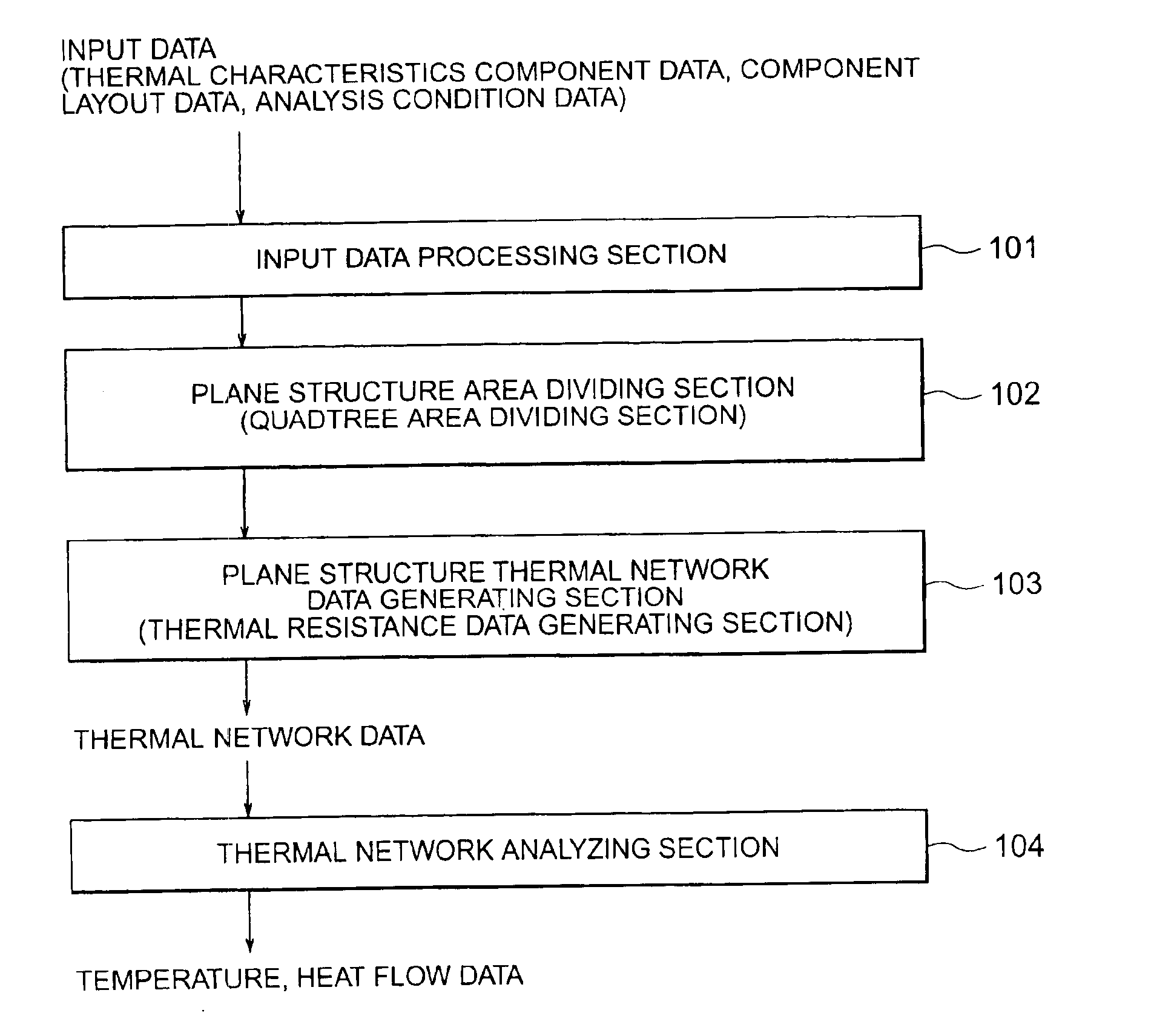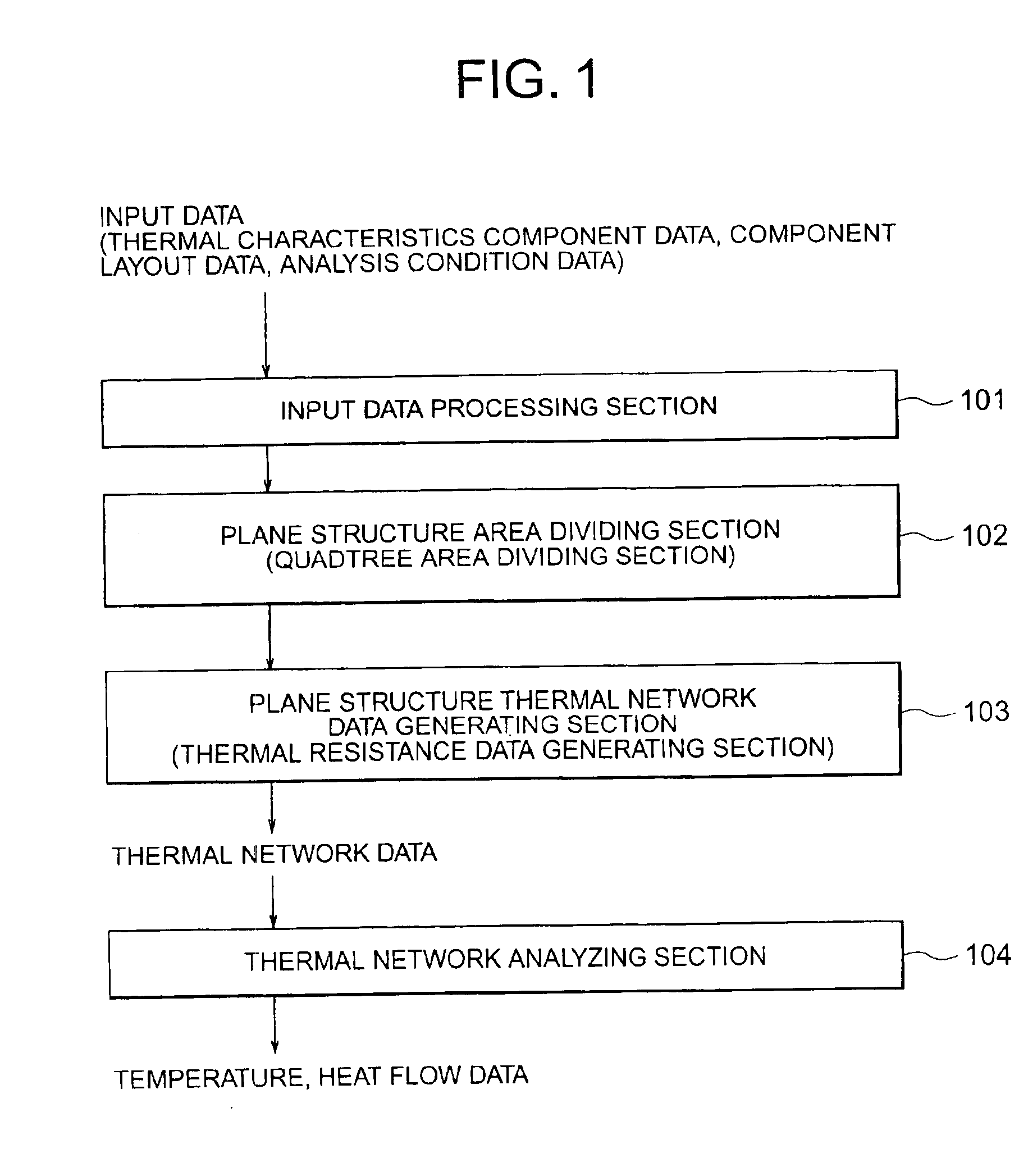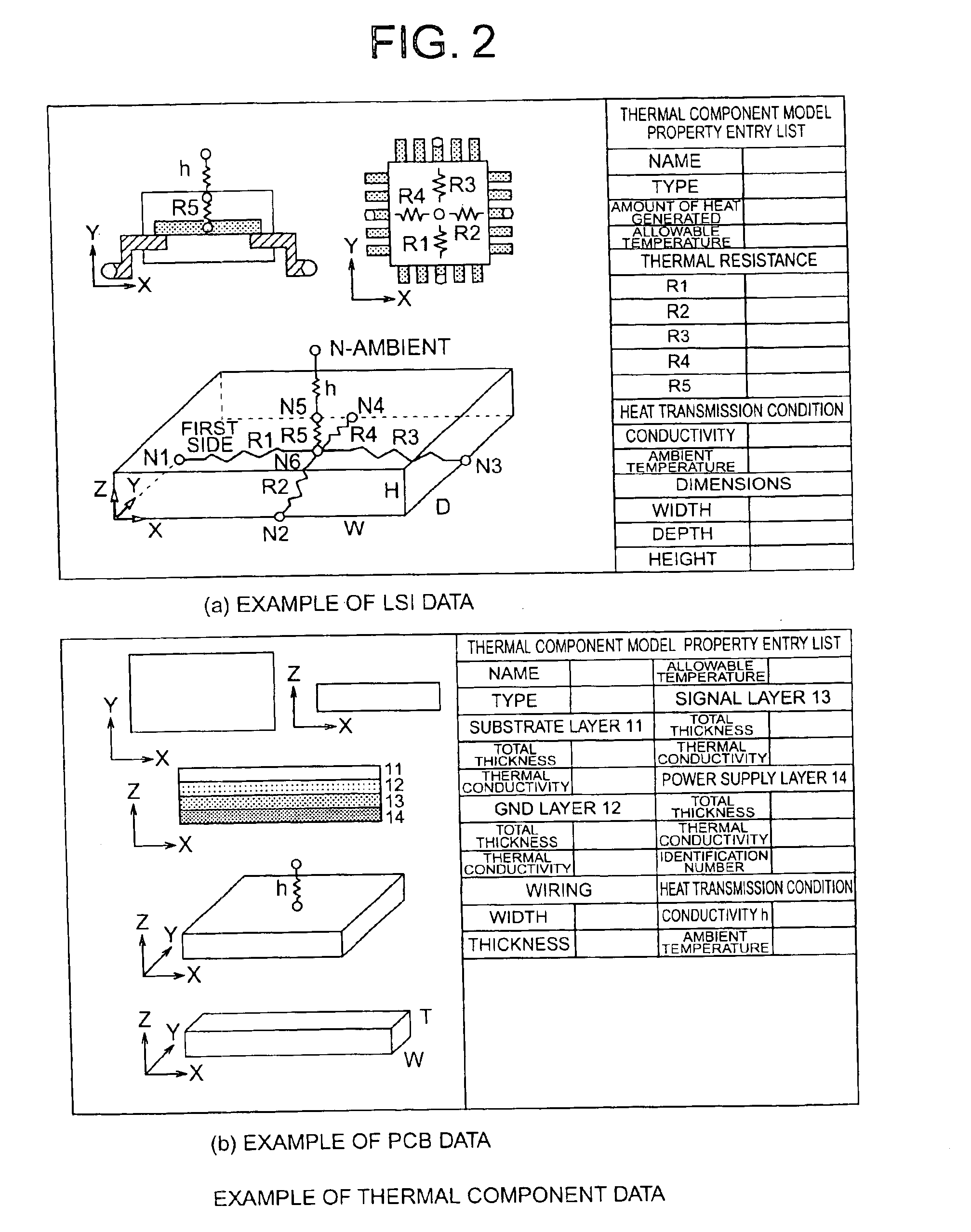System and method for generating thermal network data and recording medium
a technology of thermal network data and recording medium, which is applied in the field of generating thermal network data, can solve the problems of difficult to secure practical calculation speed, difficult to apply thermal analysis during design time, and difficult to achieve practical calculation speed, so as to achieve more practical thermal analysis and secure practical calculation speed
- Summary
- Abstract
- Description
- Claims
- Application Information
AI Technical Summary
Benefits of technology
Problems solved by technology
Method used
Image
Examples
first embodiment
[0029]For a first embodiment, description is initially given of the case of applying quadtree area division, regarding the analysis target of the thermal analysis as a plane structure (two-dimensional structure). FIG. 1 is a block diagram showing the configuration of a program for generating thermal network data for use in the method of the present embodiment. As shown in the diagram, the program includes: an input data processing section 101 for inputting input data including thermal characteristics component data, component layout data, and analysis condition data; a plane structure area dividing section 102 for performing quadtree area division; a plane structure thermal network data generating section 103 for outputting thermal network data including thermal resistance data; and a thermal network analyzing section 104 for outputting desired temperature and heat flow data.
[0030]The input data is composed of the thermal characteristics component data and boundary condition data of...
second embodiment
[0038]Next, for a method of the present invention, description is given of the case where octtree area division is applied regarding the analysis target of the thermal analysis as a solid structure (three-dimensional structure). FIG. 5 is a block diagram showing the configuration of a program for generating thermal network data according to the present embodiment. As shown in the diagram, it includes: an input data processing section 501 for inputting thermal characteristics component data, component layout data, and analysis condition data; a solid structure area dividing section 502 (octtree area dividing section) a solid structure thermal network data generating section 503 for generating thermal resistance data and outputting thermal network data; and a thermal network analyzing section 504 for outputting temperature and heat flow data.
[0039]The input data has the same configuration as in the first embodiment. The component layout data, however, consists of position data that in...
fourth embodiment
[0053]Now, for a fourth embodiment, description is given of the method for generating thermal network data with the thermal resistance of the wiring pattern also taken into account. In the present embodiment, quadtree area division is performed regarding the analysis target of the thermal analysis as a plane structure (two-dimensional structure), or octtree area division is performed regarding it as a solid structure (three-dimensional structure). Voronoi area division is also applied with one of these.
[0054]FIG. 8 shows the configuration of a program for generating thermal network data for use in the method of the present embodiment. As shown in the diagram, it includes: an input data processing section 801 for inputting thermal characteristics component data, component layout data, analysis condition data, and wiring pattern data; a plane structure area dividing section 802 having a quadtree area dividing section 802a and a two-dimensional Voronoi processing section 802b; a solid ...
PUM
 Login to View More
Login to View More Abstract
Description
Claims
Application Information
 Login to View More
Login to View More - R&D
- Intellectual Property
- Life Sciences
- Materials
- Tech Scout
- Unparalleled Data Quality
- Higher Quality Content
- 60% Fewer Hallucinations
Browse by: Latest US Patents, China's latest patents, Technical Efficacy Thesaurus, Application Domain, Technology Topic, Popular Technical Reports.
© 2025 PatSnap. All rights reserved.Legal|Privacy policy|Modern Slavery Act Transparency Statement|Sitemap|About US| Contact US: help@patsnap.com



